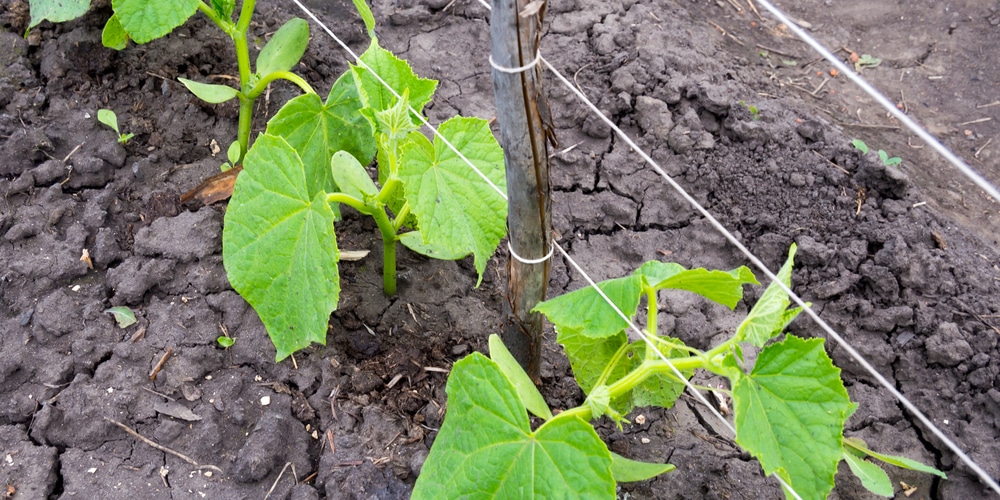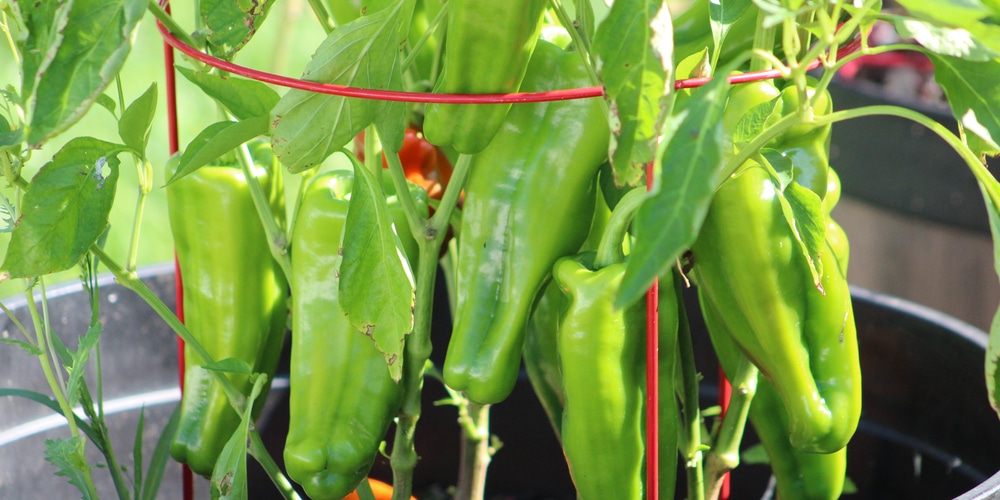If you are growing a vegetable garden (and live in a region with a suitable climate), you must consider adding peppers. After all, these warm-season crops are versatile, hardy veggies that will give you abundant harvests if you meet all your needs and requirements. And they can be a lot of fun to grow! But do peppers need a trellis?
And if yes, how can you build one? Read on if you want to find answers to these questions! Indeed, we collected all the information you must have on the subject in this essential guide.
Should You Provide Support To Your Peppers?

Under the ideal growing conditions, peppers will spread relatively fast. And because of their climbing habits, you will be better off providing them with some support.
After all, their fruits can be heavy, which might cause the plant to droop. Such a condition might make your crops susceptible to diseases and fungal infections, which tend to be closer to the ground. Indeed, if you think about it, most bugs come from it and will be attracted to your pepper plant if you let its fruits touch the soil.
Additionally, the plant’s stems might break under the weight of peppers, which can cause plenty of other issues to your veggies. That is especially true if you live in a warm region, where the growing season might be longer than in other parts of the country.
Indeed, as the summer continues, your plant will grow taller and produce more fruits, which might increase the risk of breaking.
So, the straight answer to the question is: yes, you should add a trellis (or another type of support) to your peppers. But now another issue is how do you do that? You can find some information in the following sections!
How do You Train Peppers to Grow Around Trellises?
There are many ways to allow peppers to grow vertically. But one of the best ones is to add a trellis next to them. Take a wooden or metal stake and plant it about three or four feet from your peppers. You can be creative with the choice of materials: even skewers will give you excellent results!
Then, tie your plant to the structure without harming its stems. You can use several materials, including shoelaces (if you don’t have anything else on hand!). Of course, do not tie your plant too tight, or you may damage its stems.
Also, keep an eye on your peppers: you will have to keep adding ties as your vegetables spread. Don’t forget to dig at least 2 feet deep to establish the structure in the soil and prevent issues!
Alternatively, consider using tomato cages to support peppers’ vertical growth. While you can make one at home, if you don’t want to spend too much time on the task, consider getting one at your favorite gardening store (or online). There are plenty of options, so you’ll have no issues finding one that works for you!
Remember that there are several tomato varieties, some better climbers than others. Make sure you know which one you planted in your garden to know what to expect from it.
Benefits of Providing a Support to Your Peppers
While it is not a requirement for their survival, adding trellises to your peppers will facilitate your life. To begin with, it helps you maximize the space in your garden and allows you to organize your vegetables.
Indeed, without some structure, your peppers might overtake areas that you may want to dedicate to other plants. Also, it can make picking fruits from your plants less challenging by giving you a better view of the crops.
Additionally, staking your plants ensures better airflow and exposure to sunlight. And this minimizes the risk of fungal infections and attacks from pests that usually thrive in moist and dark places. And while you can also grow your peppers in containers, you should consider supporting them with a trellis even under such conditions.
After all, it will allow for better stability, making your plant hardier to various external conditions such as strong winds, which may otherwise damage your crops.
Don’t forget to “upgrade” the support you give your plants according to their growth patterns. For instance, wooden skewers might work well for young plants but are too light for mature ones.
